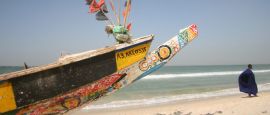Mauritania Weather, climate and geography
Weather & climate
Most of the country is hot and dry with practically no rain. In the south, however, rainfall is higher with a rainy season which runs from July to September. The coast is tempered by trade winds and is mild with the exception of the hot Nouakchott region (where the rainy season begins a month later). Deserts are cooler and windy in March and April.
Geography
Mauritania is bordered by Algeria, Mali, Western Sahara (Sahrawi Arab Democratic Republic) and Senegal. To the west lies the Atlantic Ocean. Mauritania consists mainly of the vast Saharan plain of sand and scrub. Most of this area is a sea of sand dunes, but in places the land rises to rocky plateaux with deep ravines leaving isolated peaks. The Adrar plateau in the central region rises to 500m (1,640ft), and the Tagant further south to 600m (1,970ft). The area is scattered with towns, small villages and oases. The northern bank of the Senegal River, which forms the country's southern border, is the only area in the country with any degree of permanent vegetation and it supports a wide variety of wildlife.
Do you have any Feedback about this page?
© 2025 Columbus Travel Media Ltd. All rights reserved. No part of this site may be reproduced without our written permission, click here for information on Columbus Content Solutions.




 You know where
You know where